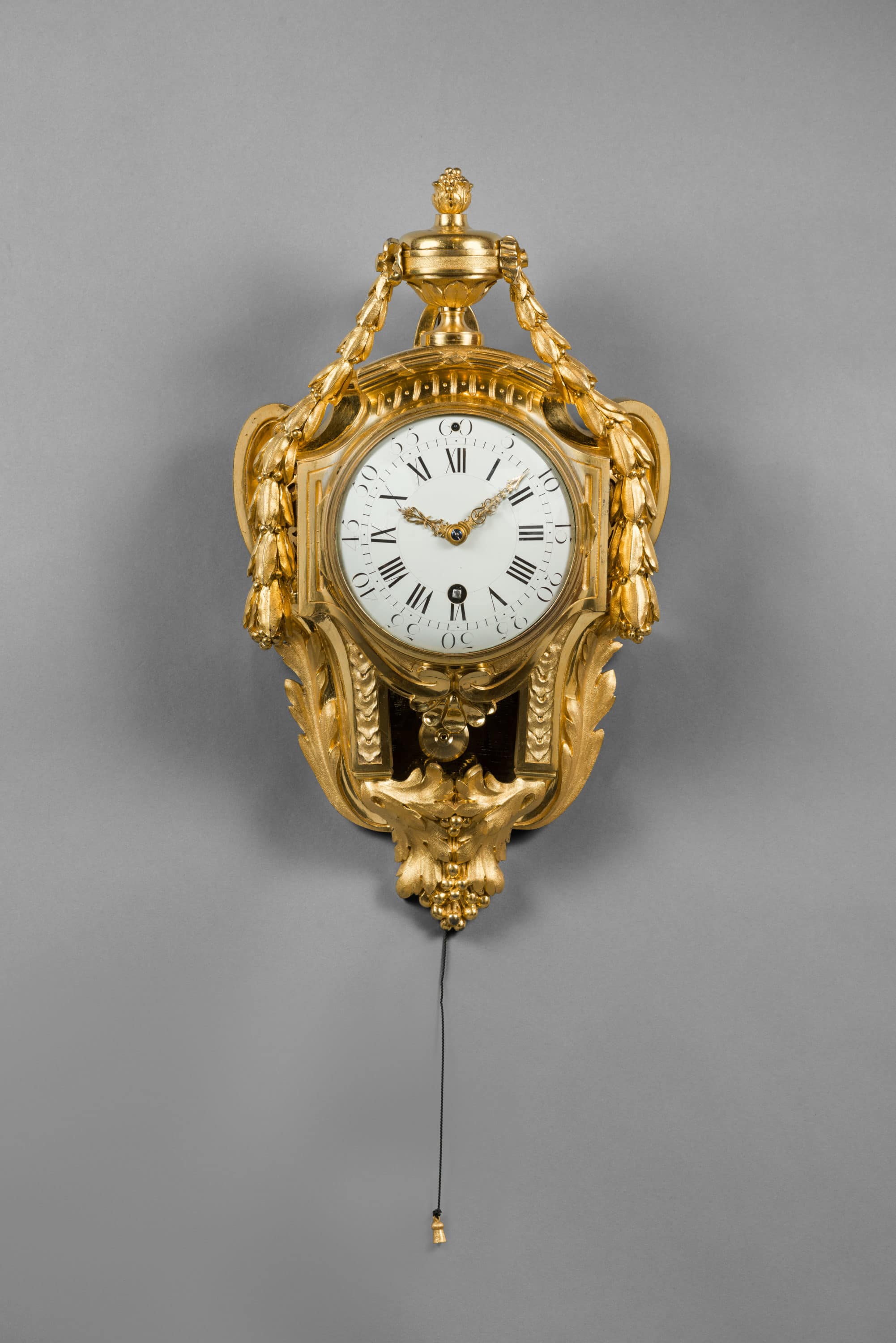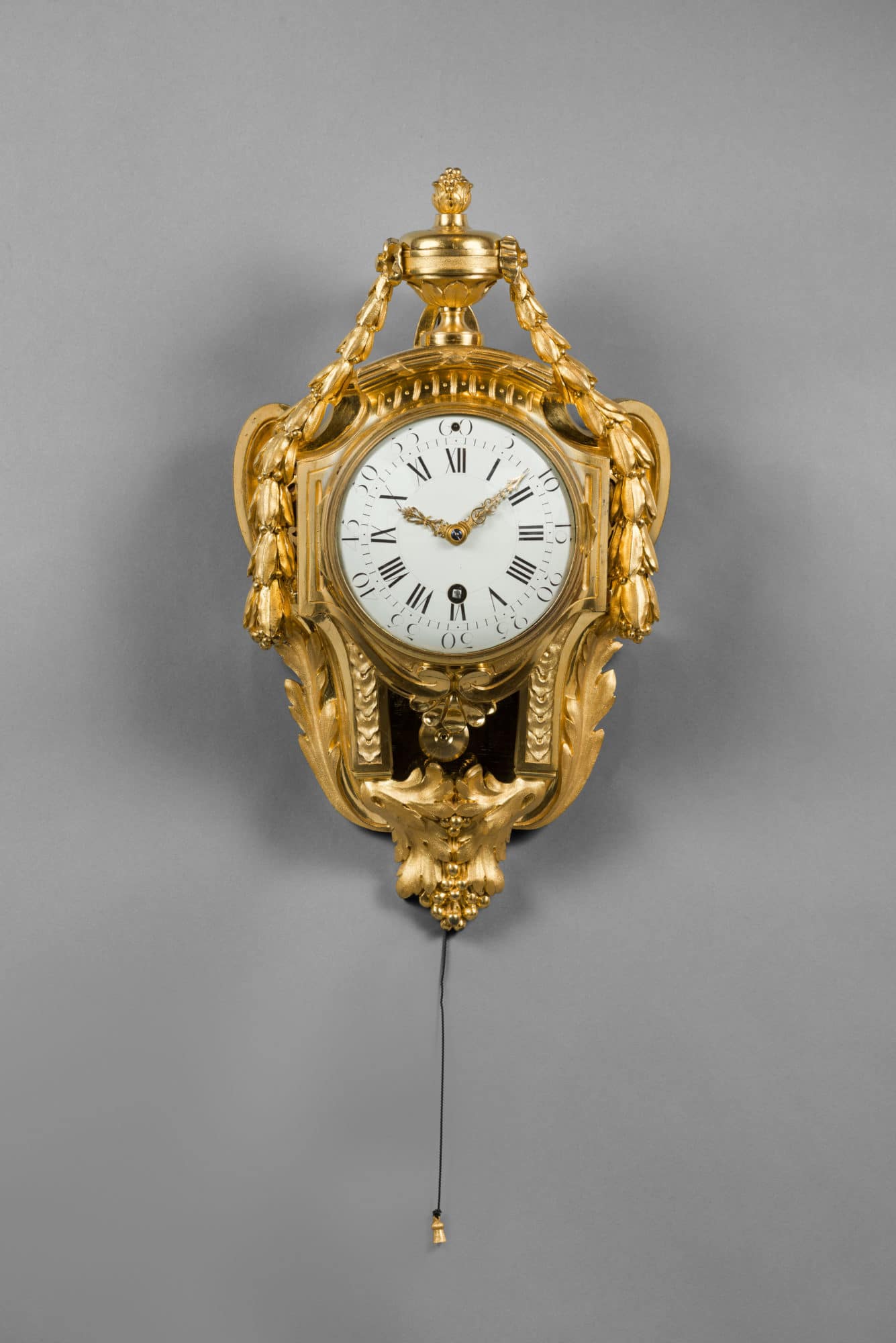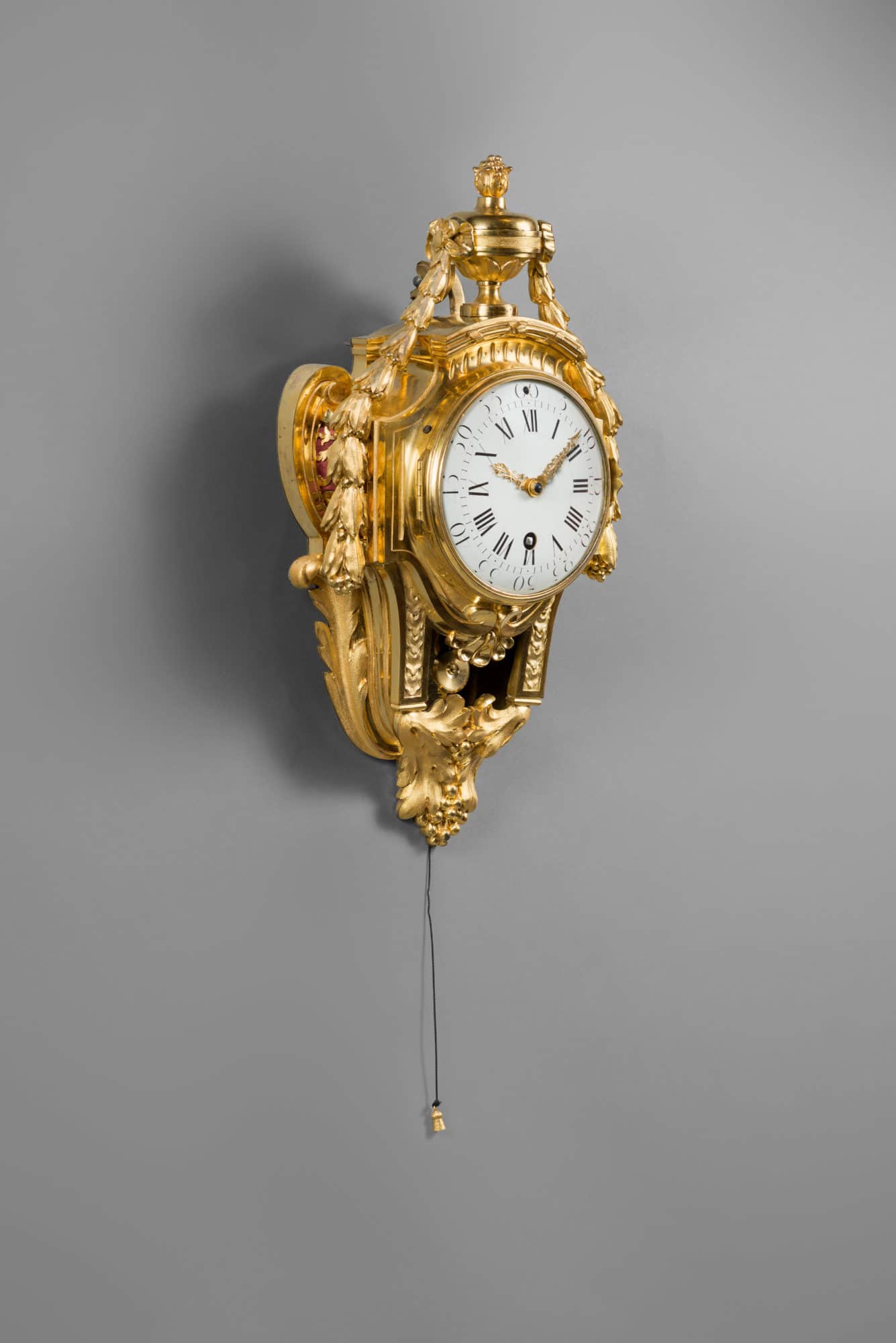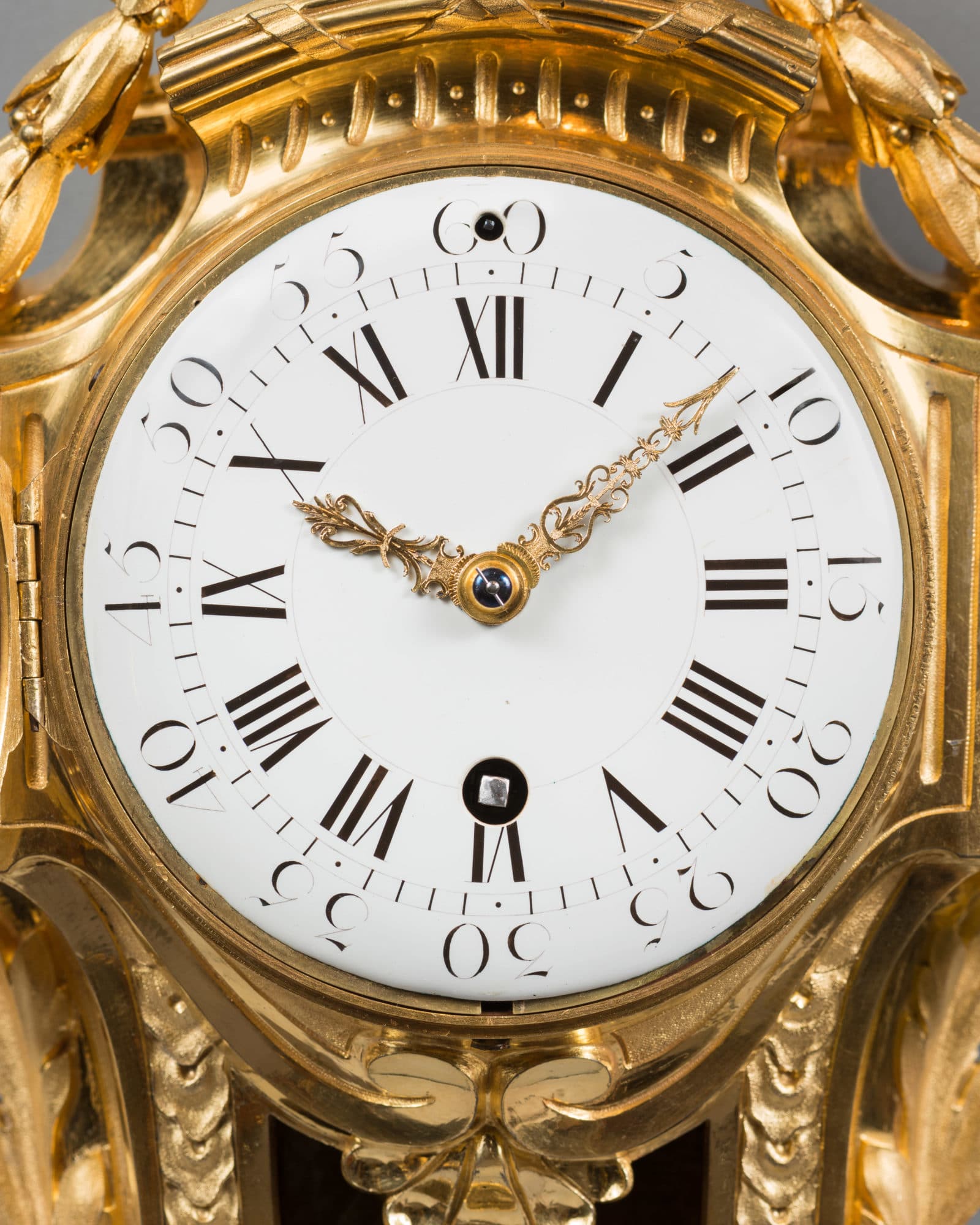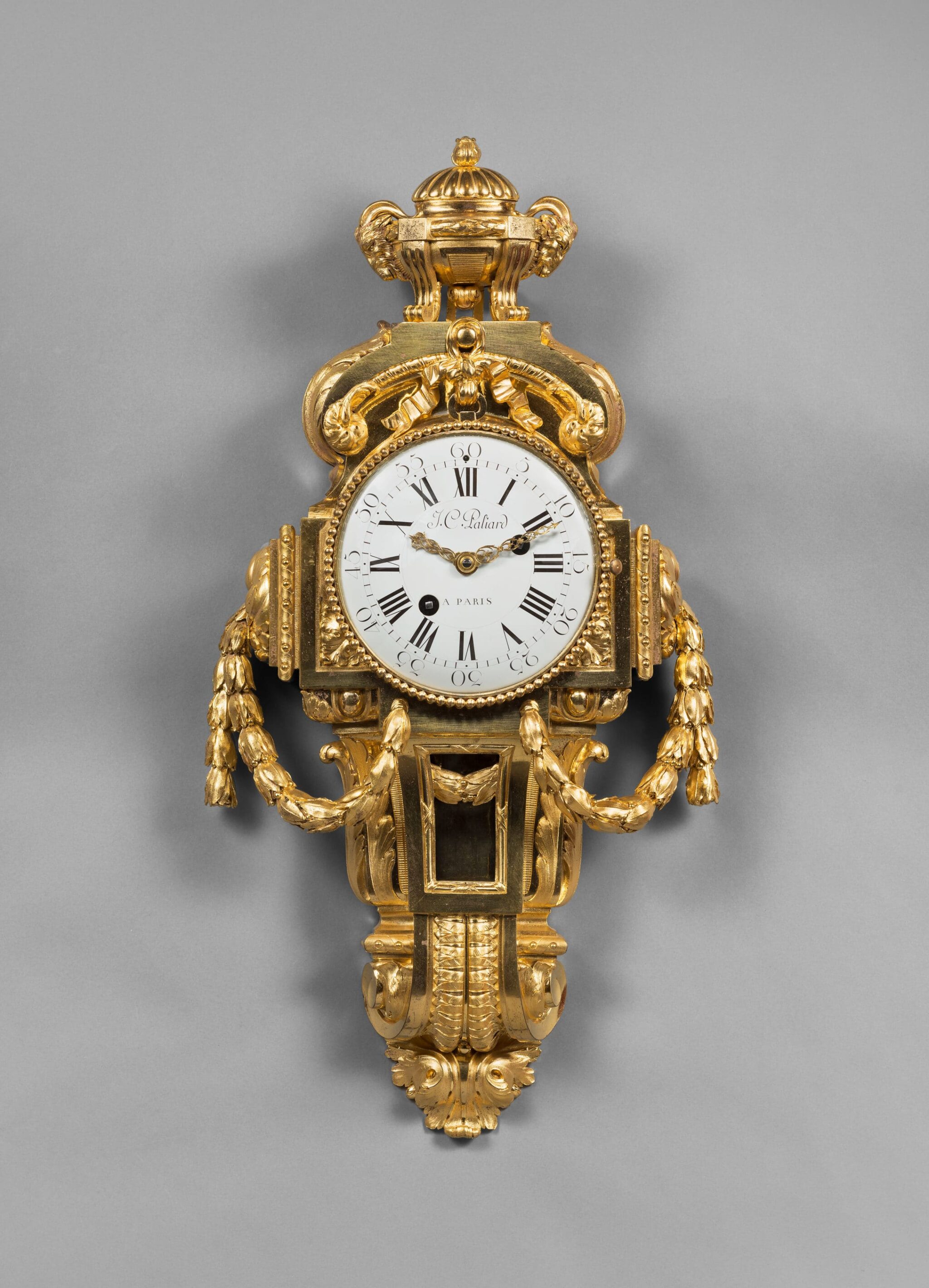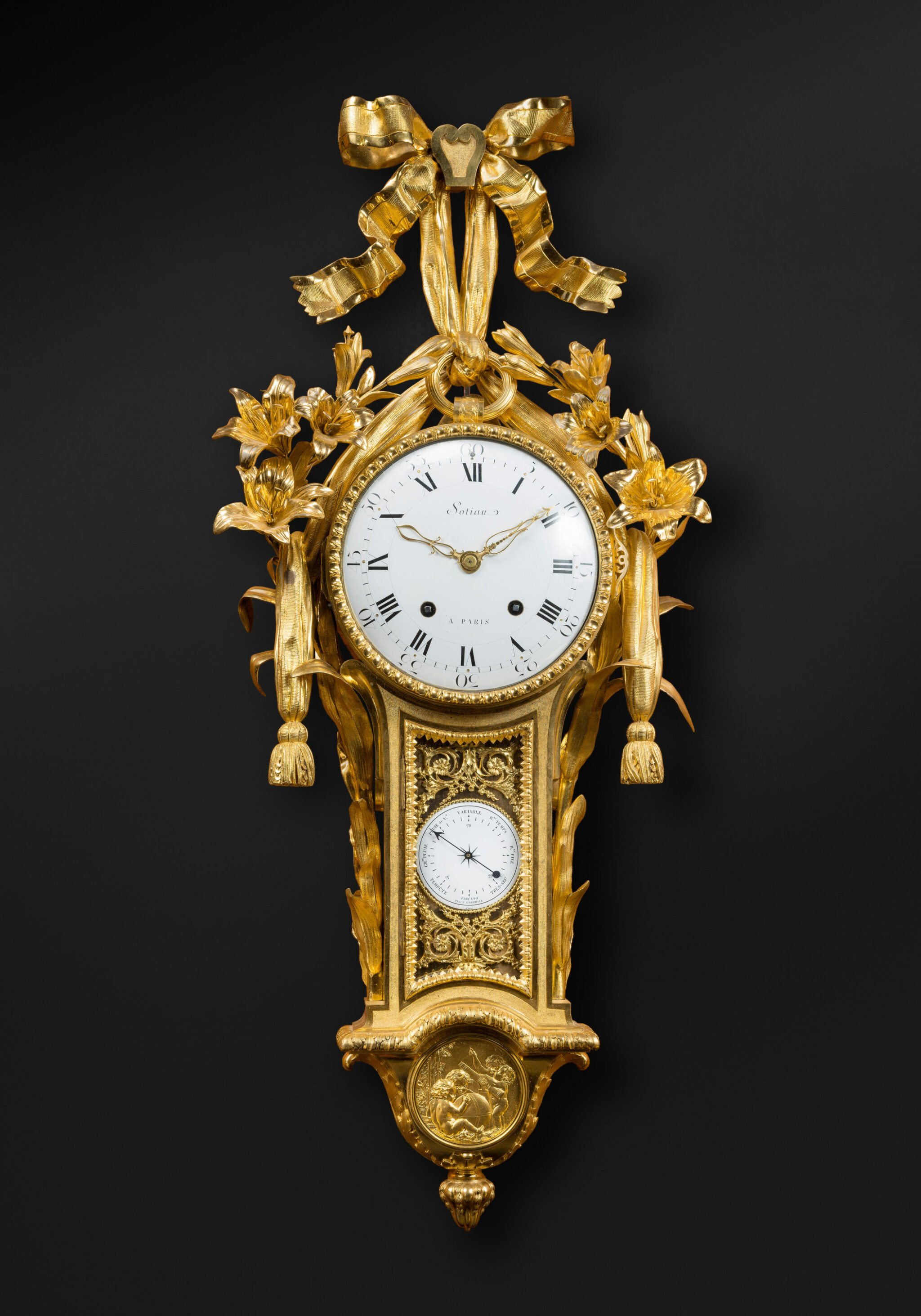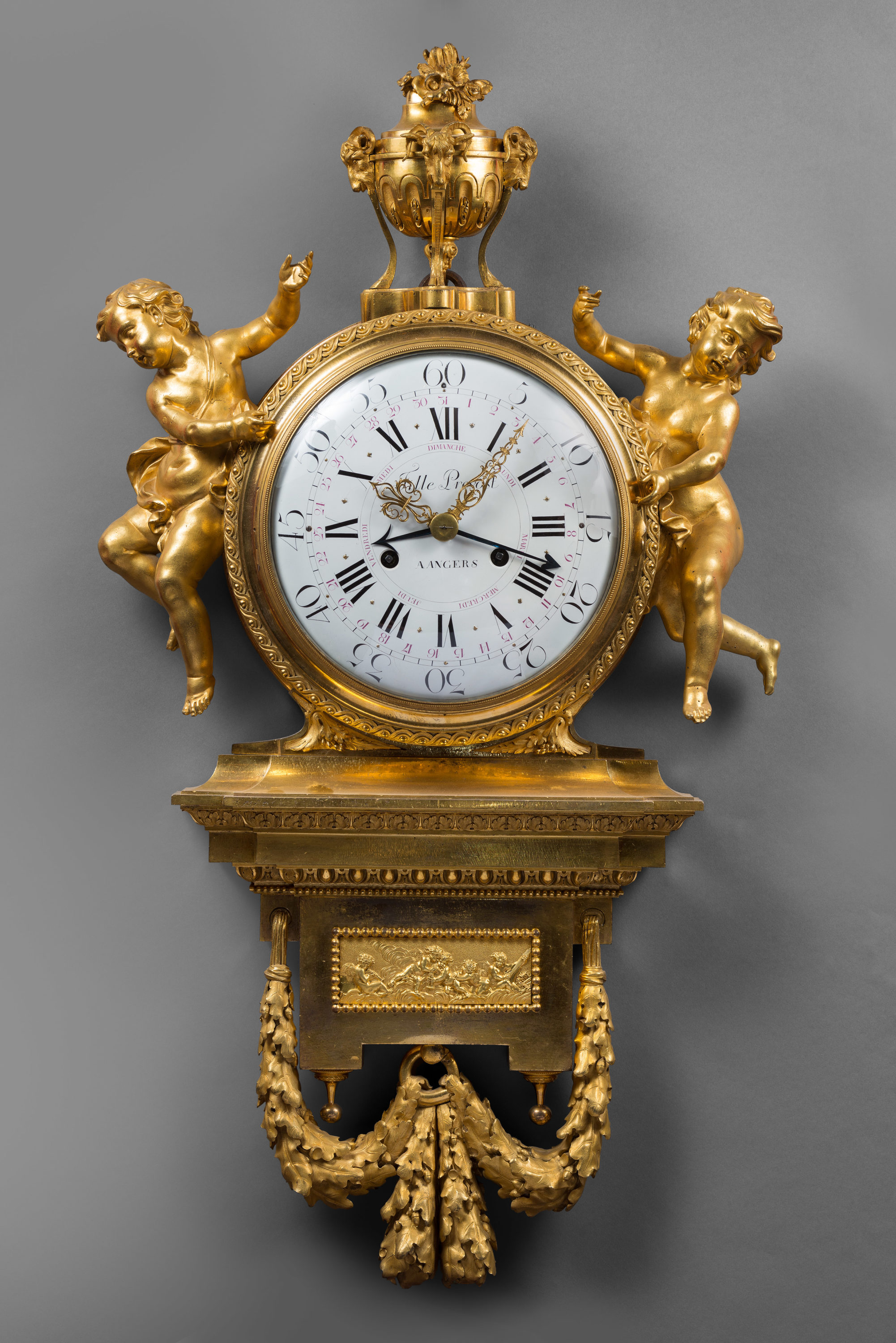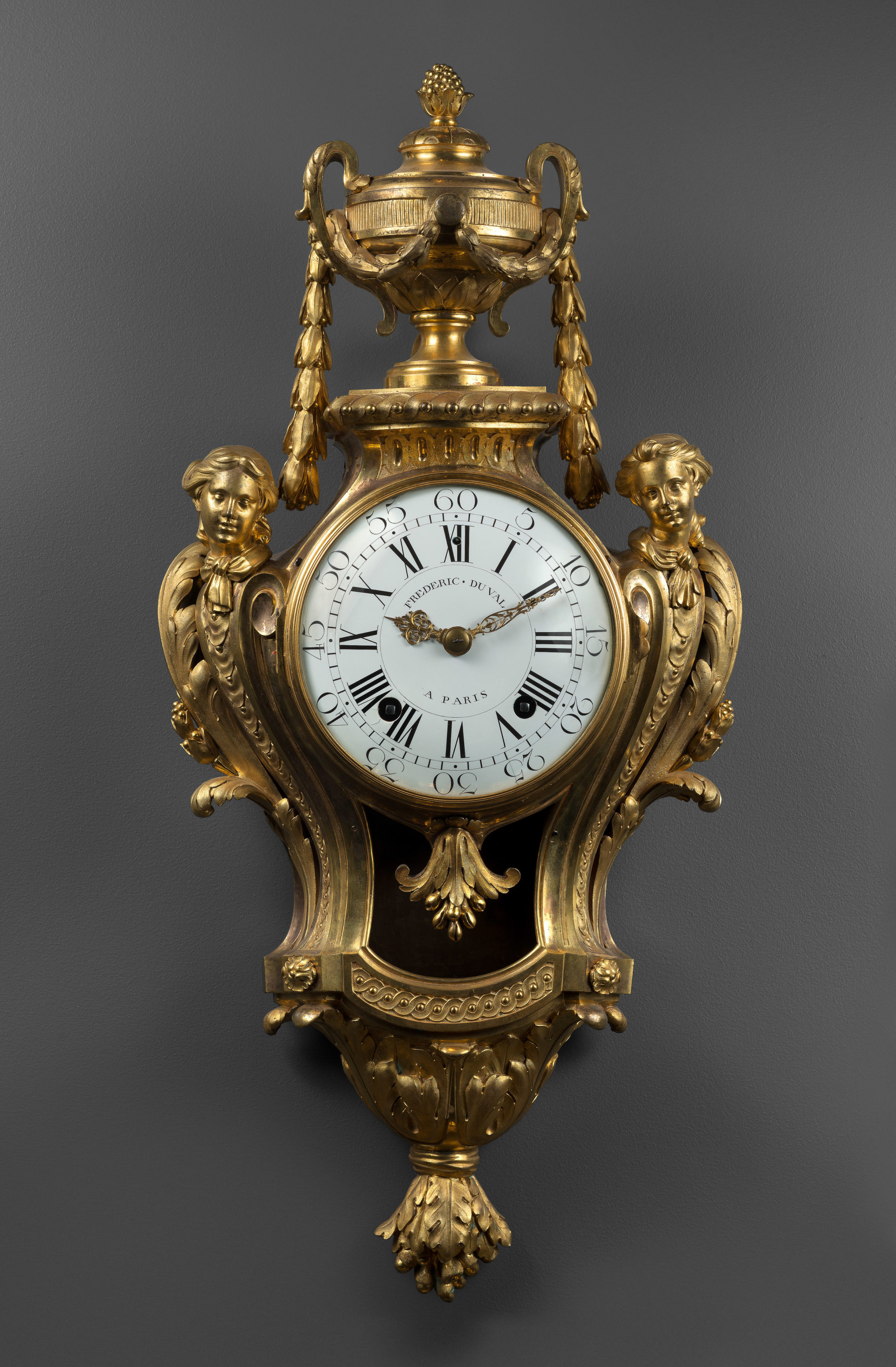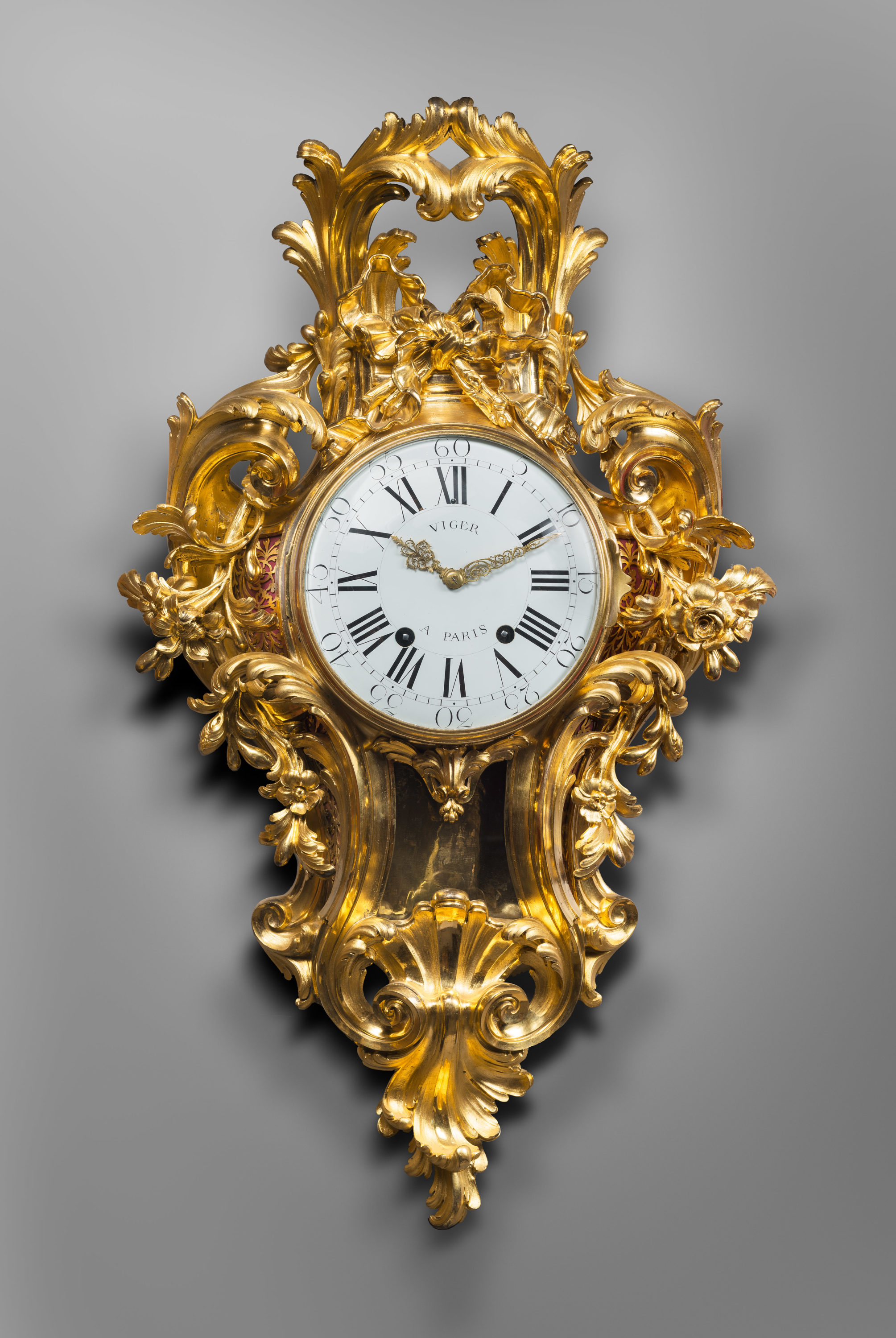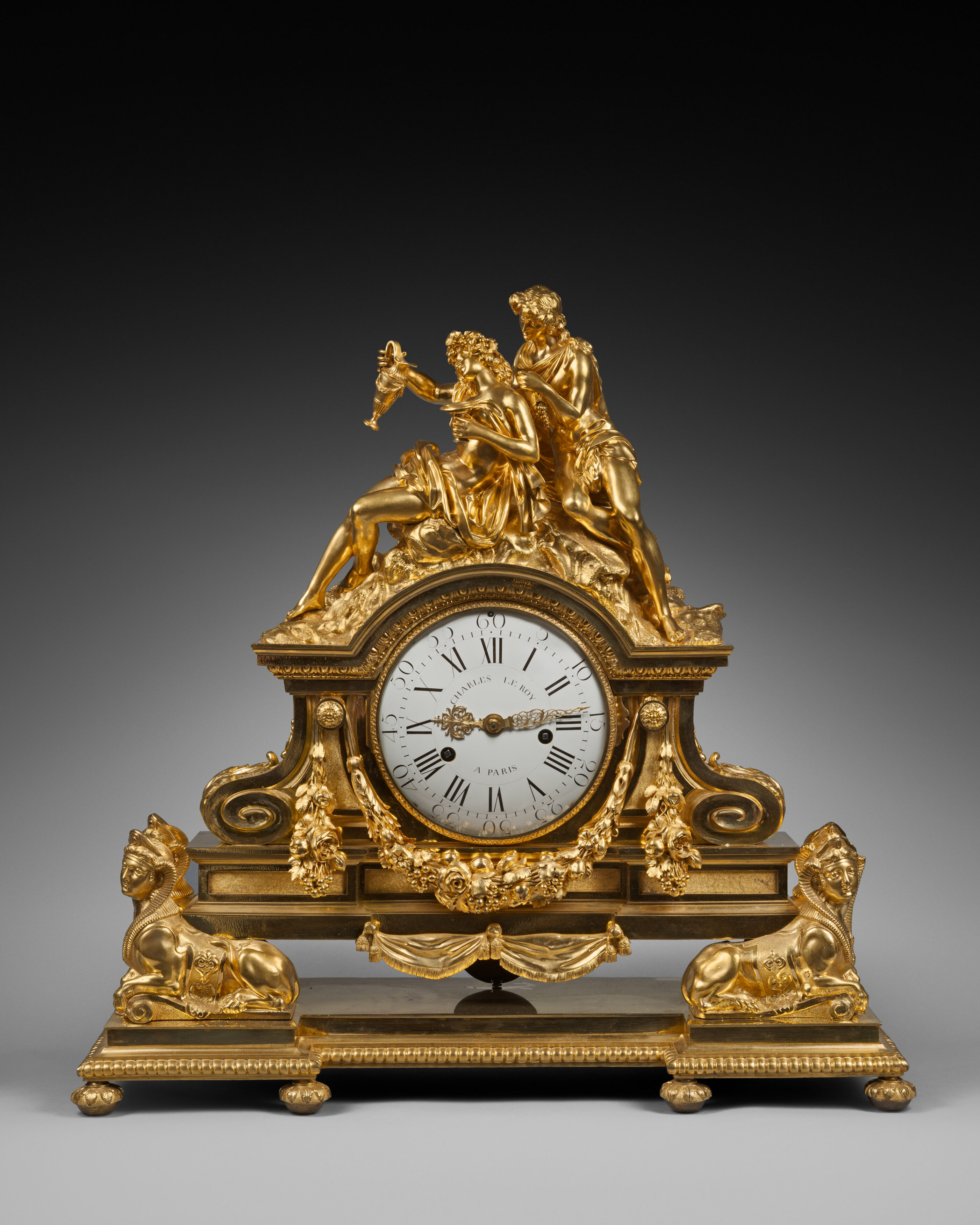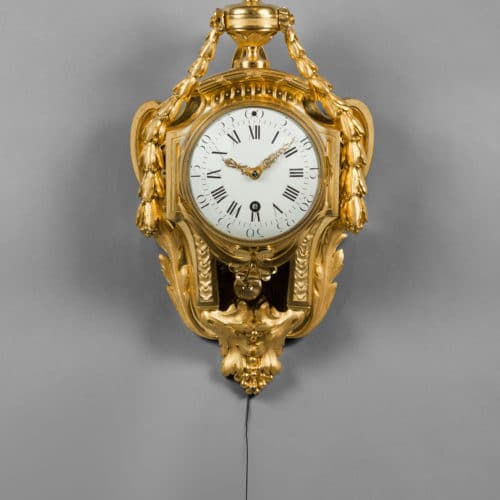Rare Gilt Bronze Wall Cartel d’Alcove with Matte and Burnished Finishing
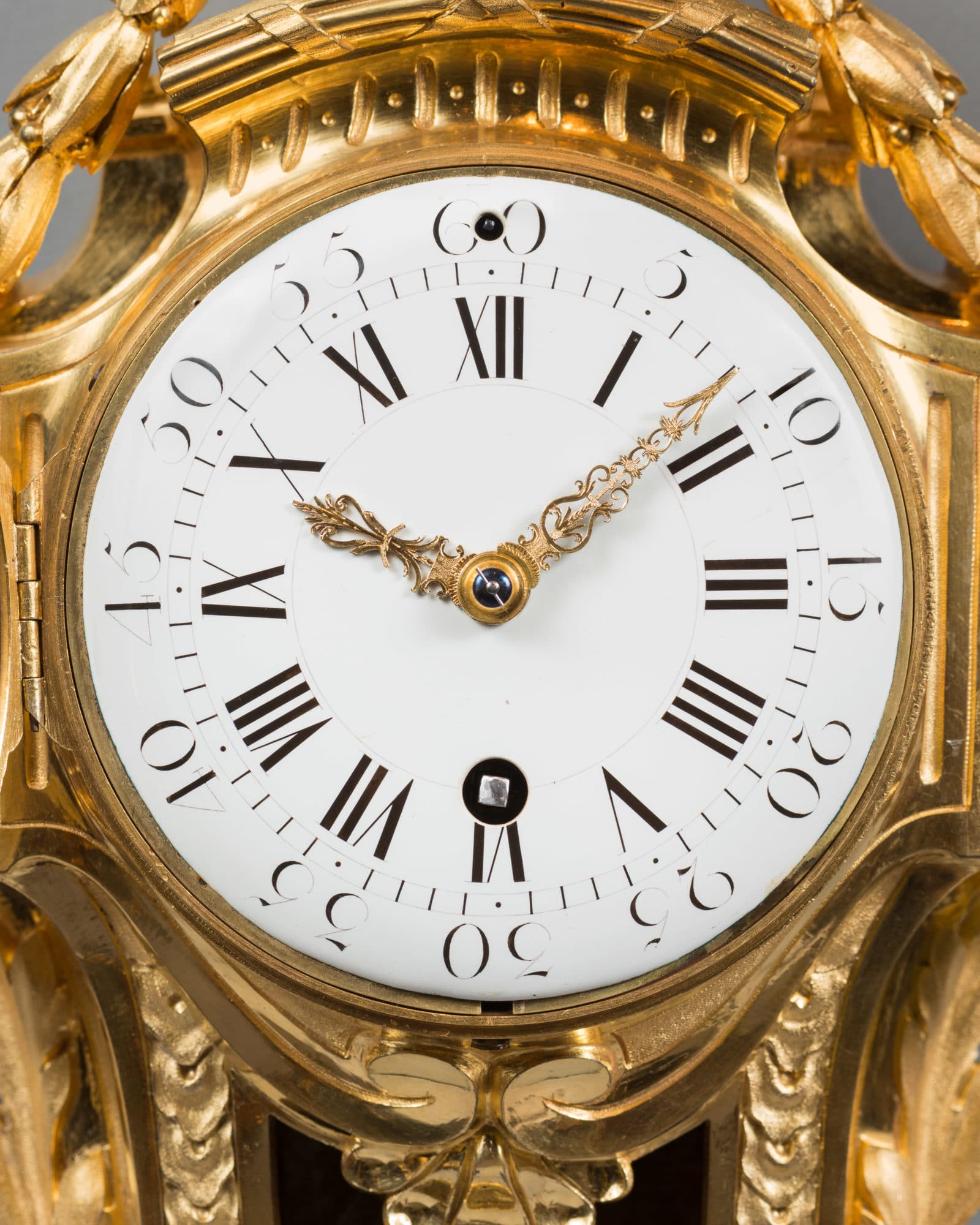
Case Made by Robert and/or Jean-Baptiste Osmond
Paris, early Louis XVI period, circa 1775
The round white enamel dial indicates the Roman numeral hours and the Arabic numeral five-minute intervals by means of two pierced and engraved gilt bronze hands that are partially matte-finished. The movement, which strikes the hour on demand, is housed in a finely chased gilt bronze case with matte and burnished finishing. The clock is surmounted by an antique urn whose lower portion is adorned with waterleaves and whose lid has a leaf and seed finial. On either side hang two laurel garlands that are suspended from ribbons attached to roundels. The neoclassical case has a curving pediment adorned with ribbon-tied reeds; the sides and façade are decorated with C-scrolls that terminate in volutes, stylized palmettes, and wide acanthus leaves. The glazed opening, which allows the pendulum’s movements to be viewed, is flanked by reserves bearing piaster-decorated friezes. The lower portion of the clock is adorned with large leaves and seeds.
Discover our entire collection of antique cartel clocks for sale online or at the gallery.
A new and distinctive type of clock appeared during the early years of the 18th century. Made of bronze, it was small in size. It was known as the “cartel d’alcôve”. As was often the case, these clocks were created at the demand of contemporary collectors who wished to read the time on elegant clocks that could be placed in the smaller and more intimate chambers of their homes. They were particularly in demand for use in bedchambers, where the beds were often placed in alcoves, a sort of compartment in the wall into which the bed was fitted. These cartels were placed above the bed. The usage evolved over the centuries, with cartels d’alcove being placed not only in bedchambers, but also in salons and anti-chambers, rooms that remained closely linked to their owners’ private lives. The present cartel stands out due to its architectural composition that was directly inspired by the neoclassicism of the latter part of the reign of Louis XV, as well as by the exceptional quality of its chasing and gilding, proof that the clock was made in one of the finest Parisian workshops of the final third of the 18th century. It was, indeed, made by the Osmonds, uncle and nephew. Today, only a small number of identical cartels are known. One example, whose dial was signed by the clockmaker Robin and the enameler Merlet, is pictured in J-D. Augarde, Les ouvriers du Temps, La pendule à Paris de Louis XIV à Napoléon Ier, Antiquorum Editions, Genève, 1996, p. 16, fig. 4.
Robert Osmond (1711 - 1789)
French bronze-caster Robert Osmond was born in Canisy, near Saint-Lô; he began his apprenticeship in the workshop of Louis Regnard, maître fondeur en terre et en sable, and became a master bronzier in Paris in 1746. He is recorded as working in the rue des Canettes in the St. Sulpice parish, moving to the rue de Mâcon in 1761. Robert Osmond became a juré, thus gaining a certain degree of protection of his creative rights. In 1753, he sent for his nephew in Normandy, and in 1761, the workshop, which by that time had grown considerably, moved to the rue de Macon. The nephew, Jean-Baptiste Osmond (1742-after 1790) became a master in 1764 and as of that date worked closely with his uncle, to such a degree that it is difficult to differentiate between the contributions of each. Robert appears to have retired around 1775. Jean-Baptiste, who remained in charge of the workshop after the retirement of his uncle, encountered difficulties and went bankrupt in 1784. Robert Osmond died in 1789.
Prolific bronze casters and chasers, the Osmonds worked with equal success in both the Louis XV and the Neo-classical styles. Prized by connoisseurs of the period, their work was distributed by clockmakers and marchands-merciers. Although they made all types of furnishing objects, including fire dogs, wall lights and inkstands, the only extant works by them are clocks, including one depicting the Rape of Europe (Getty Museum, California) in the Louis XV style and two important Neo-classical forms, of which there are several examples, as well as a vase with lions’ heads (Musée Condé, Chantilly and the Cleveland Museum of Art) and a cartel-clock with chased ribbons (examples in the Stockholm Nationalmuseum; Paris, Nissim de Camondo Museum). A remarkable clock decorated with a globe, cupids and a Sèvres porcelain plaque (Paris, Louvre) is another of their notable works.
Specialising at first in the rocaille style, in the early 1760’s they turned to the new Neo-classical style and soon numbered among its greatest practitioners. They furnished cases to the best clockmakers of the period, such as Montjoye, for whom they made cases for cartonnier and column clocks, the column being one of the favourite motifs of the Osmond workshop.
